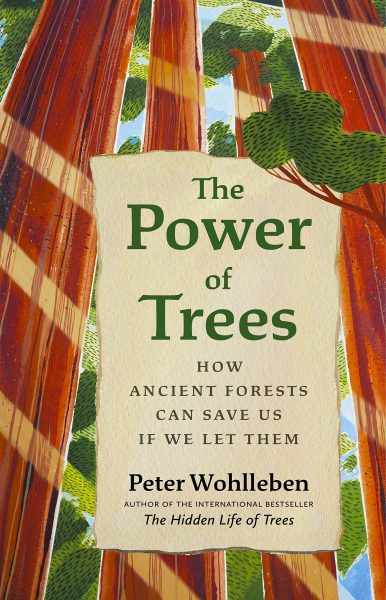
The Power of Trees: How Ancient Forests Can Save Us if We Let Them
Review By Aquila Flower
February 4, 2024
BC Studies no. 220 Winter 2023/24 | p. 130-132
In The Power of Trees: How Ancient Forests Can Save Us If We Let Them, Peter Wohlleben draws on his many years of experience as a professional forester and his skill at science communication to make a compelling case for the power of ancient, old growth forests to adapt to and moderate the effects of anthropogenic climate change. He uses a fascinating range of evidence to support his strident critique of modern forestry practices. He urges us to think of trees in their context as members of complex ecological communities and cautions against climate change mitigation strategies that treat “trees as little more than biological storage units for carbon dioxide” (68).
Interest in carbon sequestration, carbon offsets, and “natural” solutions to climate change is growing rapidly. There are many well-intentioned campaigns underway to harness the power of trees to remove carbon dioxide from our atmosphere. Such plans often focus on quickly planting many new tree seedlings, which may encourage the use of plantation forests. This approach all too often reflects an extractive mindset in which “the living and breathing entity that is a forest is reduced to a vault of carbon” (69). Wohlleben sounds the alarm that trees are not all interchangeable objects. Old growth forests function in very different ways than monocultural tree plantations do, and the trees growing in these two types of forests function differently as well. Old growth, unmanaged forests can remove more carbon dioxide because of factors such as their ability to support healthier and more biodiverse soil communities, modify local and regional climate through their shade and transpiration of moisture, and store more carbon in the wood of large, old trees. Wohlleben argues that native trees growing in ancient forests are more likely to be adapted to current climatic variations and more likely to be able to adapt to future environmental conditions. Above all, he advocates for a hands-off approach to forest management, saying that there are “two things trees need to be able to adapt successfully: time and being left alone” (2).
Wohlleben has become known internationally for his books, including the bestselling “The Secret Life of Trees”. As in his previous work, Wohlleben’s treatment of trees as the active stars of the story, rather than passive objects in the background, is a refreshing and engaging approach. Wohlleben writes in an approachable and truly charming manner. He uses minimal scientific terminology, instead explaining complex scientific concepts in simple, easy to understand terms. His writing is full of whimsy, with anthropomorphized trees “worrying”, photosynthesizing to “satisfy their hunger”, “panicking” in the face of drought, and “mothering” their seedlings.
Wohbellen has deep familiarity with the broadleaf forests of Germany and in this book he writes almost exclusively about those specific forests. The title of the book suggests a comprehensive and global perspective, but, in reality, this is a book about the power of trees native to Germany. This means that many of the details of his argument do not apply to other forest types such as the predominately coniferous forests of British Columbia. For instance, Wohbellen writes with a certain dramatic flair about the perils of coniferous tree plantations replacing the native beech forests of Germany, but offers little guidance about the threats facing other global forest types. Discussion of natural disturbances such as wildfires, which play a crucial role in maintaining biodiversity in many forest types, is strikingly absent from this book. Wohbellen seems to believe that no good can come of human intervention in forest ecosystems and says that “it is, let us be perfectly clear, impossible to extract materials in a way that benefits nature” (142). This perspective may be true in many contexts, but it lacks any awareness of the millennia of sustainable Indigenous stewardship that have shaped, and continue to shape, forest ecosystems throughout much of the world. More guidance for readers about which concepts can translate to regions outside of Germany would have been a valuable addition.
Overall, The Power of Trees is an enjoyable and informative book to read. It contains many insightful ideas about our relationship to forests and warnings that we would do well to heed as we attempt to work with forests to lessen the effects of climate change.
Publication Information
Wohlleben, Peter. The Power of Trees: How Ancient Forests Can Save Us if We Let Them. Vancouver: Greystone Books, 2022. 280 pp. $34.95 paper.
